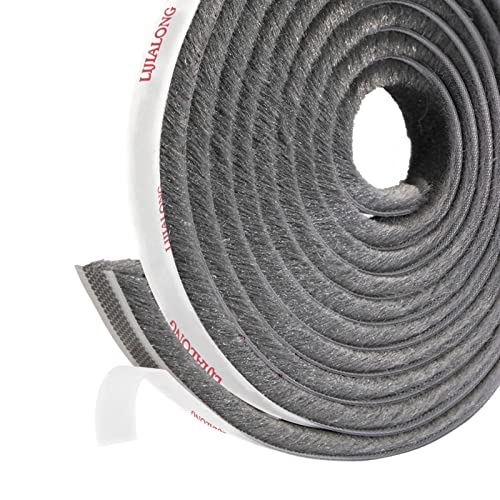The end of the long, hot summer coupled with rising energy prices means it’s a good time to check that your home is properly insulated before winter sets in.
And while insulation offers little in the way of visual appeal – no house guest is going to be bowled over by the mineral wool you’ve installed in the walls – it remains a worthwhile investment for any homeowner.
Why bother insulating your home?
Three main reasons: Comfort, cash, and carbon dioxide. An insulated home retains heat far more effectively, so will help ensure you feel warm and snug and sealed off from the elements when winter strikes. Effective insulation can also save you a great deal of money in the longer term – potentially hundreds of pounds a year.
According to the Energy Saving Trust (EST, energysavingtrust.org.uk), in an uninsulated home, 45% of heat loss is through solid walls, 33% through other walls, 25% through the loft or roof space, and 20% through windows and doors – which all adds up to hundreds of pounds more spent on energy bills every year, no good for your pocket or the environment.
“You’ll see a financial benefit straight away,” says Dave Robson, chief executive officer of InstaGroup (instagroup.co.uk) and board member of the National Insulation Association. “Your boiler will be able to maintain your chosen temperature without using as much energy, which has a direct impact on your energy bill.”
A home that guzzles less gas inevitably cuts carbon emissions too, and if you’re unsure how efficient your home is, Robson says it’s worth having it assessed. “Most companies that deal with energy efficiency will come out to your house and do a survey,” he says, “and they’ll tell you exactly what needs doing.”
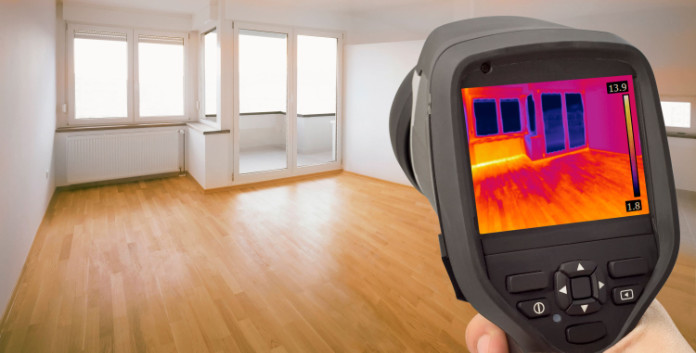
In short, properly insulating your home is an environmentally-friendly move that could save you a fortune over the years. As the EST notes: “There are many ways to insulate your home, which will not only save you money but are better for the environment too. Some options are relatively simple – from lagging pipes to even insulating a loft – and can be completed by a householder.”
Simple switches that add up
Insulation may sound quite technical, but making your home more heat-savvy can also be as simple as buying a nice furry rug. Soft furnishings provide an extra barrier to radiant heat loss, and even a poster or picture on the wall can aid retention.
For bigger gains, consider a thick woollen carpet or wide wall hanging, and ‘dress’ any bare windows with curtains. “You get a lot of heat loss through your windows,” says Robson, “so for us that’s basic housekeeping advice.”
6 ways to insulate your home
Here are the six main areas the EST says need insulating in the home, and how much you could save on energy bills.
1. Roof and loft

Simple measures aside, the biggest heat losses will be coming from the within the very fabric of your home. Warm air rises, and estimates suggest that an uninsulated home suffers roughly a quarter of all heat loss through the roof.
Insulating the loft or attic is a simple and effective way to reduce heat loss and heating bills, and it should pay for itself many times over, says the EST. If access is easy and loft joists are regular, you can use rolls of mineral wool insulation. DIY-savvy homeowners can attempt this themselves – but remember, this is no IKEA flat-pack.
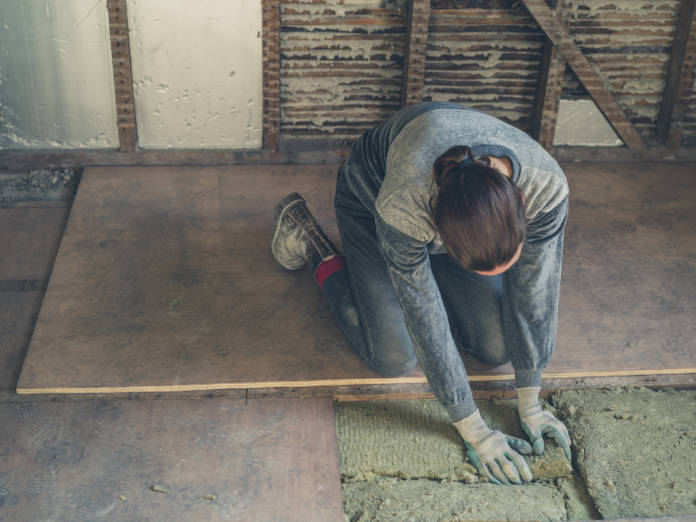
Insulation between the loft joists will keep your house warmer but make the roof space above colder, meaning pipes and water tanks in the loft could freeze more easily, so you’ll need to insulate them too.
Research the process thoroughly and, if in doubt, send for the specialists. Insulating the roof itself should always be done by a professional, usually with rigid insulation board or spray-on foam.
In addition, the cooler air in your insulated loft could mean cold draughts come through the loft hatch, so fit an insulated loft hatch and put draught-excluding strips around it. If your loft is easy to access, isn’t damp and doesn’t have a flat roof, you could probably insulate it yourself, but where there’s damp a professional installer should be used.
How much can you save?
According to the Energy Saving Trust, loft insulation in an uninsulated, gas-heated semi-detached house costs an average of £300, but can save an average £135 in energy bills annually – paying for itself in two to four years. A pretty good deal when you consider that well-installed loft insulation should last around 40 years.
2. Cavity walls
If loft insulation is your home’s snug bobble hat, wall insulation is its cosy winter coat. First of all, you need to know what sort of wall your property has. Most UK homes are either ‘solid wall’ – single slabs of brick or stone – or cavity walls, that leave a space between two layers of concrete or brick.
The age of your house is often a giveaway: houses built from the 1990s onwards usually have wall insulation, but older houses built before the 1930s are generally likely to be solid and could be losing a lot of heat. There are other, more mercurial clues: “If your home is made of entirely horizontal brick then you’ve probably got a cavity,” says Robson. “If you have a mixture of bricks laid horizontally and end-to-end, that’s generally a sign that the wall is solid.”
Homeowners should not consider attempting this insulation task – call in the professionals and get an assessment up front.
How much can you save?
The EST says cavity wall insulation can cost between £330-£720 to install, depending on the type of house, and savings on heating bills can be anything from £65 a year for a flat to £250 a year for a detached house.
3. Solid walls
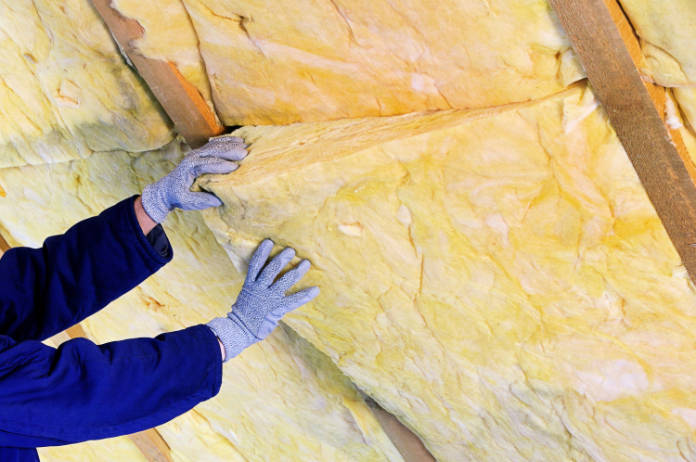
Solid walls let through twice as much heat as cavity walls, but they can be insulated, either from the inside or outside. Internally, rigid insulation boards are fitted to the wall, or a stud wall is built and filled in with insulation material. Externally, a layer of insulation material is fitted to the wall, then covered with a special type of render or cladding. There are advantages and disadvantages to both methods, says the EST.
How much can you save?
Solid wall insulation usually costs more than insulating a standard cavity wall, but heating bill savings are bigger. The EST says external wall insulation costs between £8,000-£22,000 and internal costs £4,000-£13,000. Savings can be anything from £115-£415 a year,
4. Floors
Once you’ve ticked off roof and walls, you can think about insulating your floor.
“It’s not done a huge amount because, practically, it’s difficult, as you’ve got to get underneath your property, which isn’t always possible,” explains Robson. “If you live in a park home, it’s easier to do and a really good idea.”
You can seal the gaps between floors and skirting boards yourself with a DIY store sealant. Older homes are more likely to have suspended timber floors, which can be insulated by lifting the floorboards and laying mineral wool insulation supported by netting between the joists. Many homes, especially newer ones, will have a solid concrete ground floor. This can be insulated when it needs replacing, or can have rigid insulation laid on top.
Most modern floors have at least a dash of insulation built in during construction, and it minimises the cold floor shock of of the morning bathroom floor.
Floors of upstairs rooms don’t need to be insulated if they’re above heated areas, but it’s a good idea to insulate those above unheated spaces, such as garages.
How much can you save?
Insulating the floor can cost anything from £950-£2,200, and savings range from £25-£65 a year.
5. Tanks, pipes and radiators
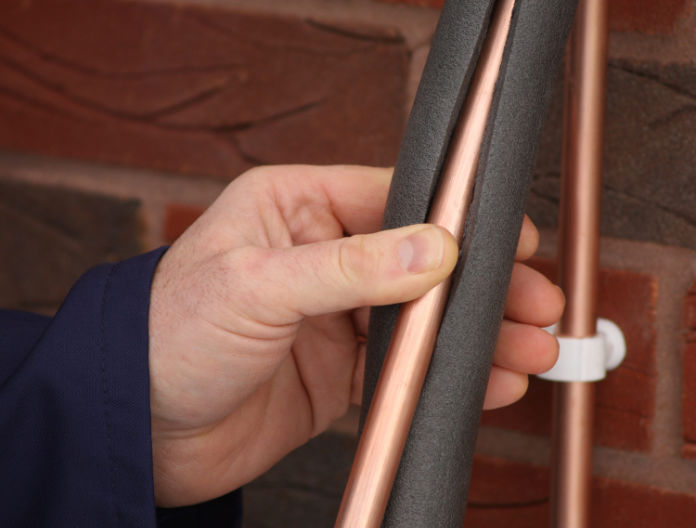
Lagging water tanks and pipes and insulating behind radiators reduces the amount of heat lost, so you spend less money heating water and it stays hotter for longer.
Fitting a hot water cylinder jacket is straightforward, says the EST. Pipe insulation is simply a foam tube that covers the exposed pipes between the hot water cylinder and boiler. It can be bought from a DIY store and slipped on.
How much can you save?
Savings vary widely depending on what work is done, but the EST says installing a hot water tank jacket on an uninsulated tank, for instance, will cost about £15 and save around £89 a year.
6. Draught-proofing
Draught-proofing is one of the cheapest and most effective ways to save energy, and it’s as simple as using sealant to block unwanted gaps around areas including windows and doors, and around pipework leading outside.
Self-adhesive foam strips (Amazon) work wonders for covering gaps around windows, door frames and loft hatches – a cheap and easy buy from your local hardware store. Consider a keyhole cover for your front and back door – a small metal plate that stops the wind from whistling in – and shore up your letterbox with a letterbox brush.
Cracked walls can be mended with a dollop of cement or hard-setting fillers, while a professional could install a suitable draught-stop into an out-of-service chimney.
Remember, when blitzing cracks and crevices, it’s essential not to block any of the intentional ventilation needed to air out your home. Extractor fans, underfloor grilles and trickle vents should all be left undisturbed.

Portable draught excluders for the bottoms of doors are cheap, available off-the-shelf and come shaped as tube trains, sausage dogs and any number of other fluffy animals. Despite their simplicity, they work pretty well. We like this sheep draught excluder, available on Amazon.
Alternatively, pay a professional to draught-proof your whole home in one fell swoop. It’s comparatively costly – the Energy Saving Trust estimate a £200 price tag for a typical semi-detached property – but will save on time and effort, and, depending on your skill level, could yield far sturdier results.
How much can you save?
Draught-proofing around windows and doors could save around £25 per year. and as draught-free homes are comfortable at lower temperatures, you may be able to turn down the heating, saving even more on energy bills.
How to find a good installer
For more information on saving energy, visit energysavingtrust.org.uk. Looking for a good installer? The National Insulation Association is a member organisation for the insulation industry in the UK. For details of local installers, visit nia-uk.org
Best-selling draft proofing
Stuck for inspiration? Check out our list of best-selling Amazon products!
- ✅MULTI-FUNCTION: This non permanent door sweep effectively reduces noise, prevents dust and bugs from entering under the door, and keeps the room quiet and clean. Blocks the warm air from entering...
- ✅EASY INSTALLATION: Our under door draught excluder can be easily installed in 30 seconds, without gluing and drilling. You don't have to damage your doors to install a heavy rubber seal, simply cut...
- ✅ SOUNDPROOF: This draught excluder for bottom of door is also a great way to reduce noise coming from outside your flat or even between rooms, reducing sounds up to five times.
- ECONOMIC & PRACTICAL - A small investment used on your windows & doors to improve energy efficiency by sealing gaps and leaks which allow outside air to enter, and inside conditioned air to escape
- ADHESIVE PILE WEATHER STRIPPING -This brush door seal weather strip is constructed of woven grey pile material at 9mm (adhesive back) x 5mm(brush length)
- HIGH QUALITY WEATHERSEAL - High tolerance, can be wraped without distortion, durable and flexible; High density felt, soft and no harm to your hand. Fine and closely woven, less lint, can stand wear...
- 【Soft and safe material】 :The weather stripping for doors and windows is made of nylon fabric and PU foam,soft and wear-resistant,smooth surface doesn't affect the movement of doors and...
- 【Reduce Costs】: In winter and summer, window insulation seal strip can prevent the leakage of hot and cold air, so that your room can be heated or cooled more effectively, saving electricity and...
- 【Easy Installation】: With grid double-sided adhesive on the back, which is highly adhesive and not easily deglued. PLEASE NOTE: Install No need to remove doors, windows,easy to install and saves...
- 🏠【Widely Use】:The soundproofing seal is widely used for various types of sliding doors and windows or swing doors and windows,such as glass, wood, aluminum, plastic (pvc, upvc) etc.It can be...
- 🏠【Weatherproof and Anti-collision】:1.Using the weather strip can be windproof, waterproof, dustproof, weatherproof, noise reduction, heat insulation in all seasons.Even if the external...
- 🏠【Strong Adhesive】 :The draft stopper seal is designed with back grid adhesive, which has strong stickiness and is not easy to fall off, providing long-term protection for your doors and...
- 👍【PROFESSIONAL DRAFT STOPPER】: The door Insulation Strip can prevent the air conditioning or heating air in the house from being lost from under the door, thus improving the heating and cooling...
- 👍【HIGH-QUALITY MATERIAL】:Self-adhesive under-door draft excluder, made of safe and non-toxic silicone material, better temperature resistance and sealing performance than rubber can effectively...
- 👍【EASY TO INSTALL】: You can cut the door seal strip to the size you need according to the size of the door, very flexible and won't damage the floor. Very durable and long life.
Last update on 2024-04-03 / Affiliate links / Images from Amazon Product Advertising API
You may be interested in…
This article may include affiliate links to products and services where we may receive a small fee to support the running of this site if you make a purchase or is a sponsored article from one of our select editorial partners providing valuable advice and information to our readers.



























































